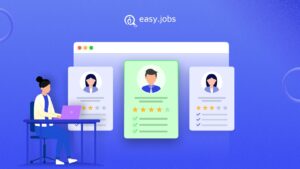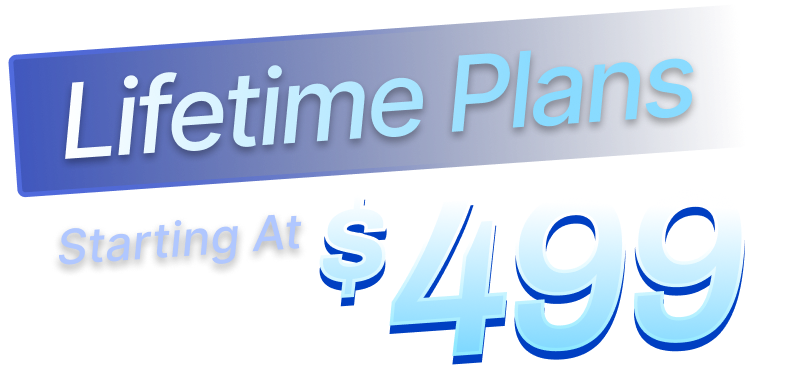Human Resources and Recruitment can sometimes feel like learning a new language because of how fast they change. Buzzwords are those catchy, but sometimes confusing, words or phrases. In the world of HR, each one has its own meaning and weight. This blog tries to be your guide by breaking down 10+ HR & Recruitment Buzzwords, explaining what they really mean, and showing how they have a big effect on your hiring strategy.

10+ HR & Recruitment Buzzwords & What They Really Mean For Hiring Strategy
From “Talent Acquisition” to “Inclusion and Diversity,” these terms describe methods and ideas that can make or break your hiring process. Know about 10+ recruitment & HR buzzwords and their potential meaning for hiring strategy.
Recruitment Buzzword #1: Talent Acquisition
Talent acquisition is a smart way to find, attract, and bring on board the best people to meet the changing needs of an organization in an efficient and effective way. Talent acquisition is a long-term plan, while recruitment is a more reactive process that is often short-term and based on openings. It’s more than just filling jobs. It’s about knowing what the organization’s goals are, figuring out what roles are most important for growth, and looking for people who can fill these roles now and in the future.
The HR buzzword Talent acquisition includes a number of important tasks, such as workforce planning, company branding, targeted recruitment marketing, thorough candidate evaluations, and smooth onboarding. The method is based on data, looks at market trends, and uses technology to find the best options.
Talent acquisition is a key part of the hiring strategy because of this strategic focus. A good plan for hiring people takes into account the company’s goals, its culture, and the talent landscape. It helps businesses stay competitive in the market by making sure they have the right people in place with the right skills. Understanding and using talent acquisition methods well can lead to better candidates, more scalability in the future, and, in the end, organizational success.
Recruitment Buzzword #2: Employer Branding

The term “employer branding” refers to the practice of marketing a business or organization as an attractive place to work to a certain demographic that the business requires and wants to attract, recruit, and keep. It entails molding the opinions of prospective and current employees, as well as the general public, on what it’s like to work for the company.
Employer branding has a significant effect on both employee attraction and retention. A positive employer brand has a multiplicative effect on employee engagement and retention. It is a powerful tool for attracting and retaining top personnel since it conveys information about the company’s work environment, culture, career opportunities, and values.
Employer branding is an HR buzzword that is essential in guiding the selection process. It is useful for improving the overall candidate experience, developing the Employee Value Proposition (EVP), and setting the tone for job marketing. A well-developed employer brand can save time and effort throughout the hiring process by attracting qualified candidates who are a good cultural fit for the company.
Recruitment Buzzword #3: Passive Candidates

People who are employed and not actively looking for a new position are considered passive prospects, however, they may be open to a good career opportunity if one arises. They stand in contrast to candidates who are actively seeking employment.
The new recruitment landscape gives major weight to passive prospects. They are less likely to be considering several job offers since, unlike active candidates, they are not actively responding to job advertisements. Additionally, they are frequently seen as effective in their professions because they are currently employed.
Targeting passive prospects is important in hiring strategy. Employers must interact with applicants beyond the typical job advertisements by meeting them where they are, including at networking events or on social media. Employer branding, offering appealing EVPs, and utilizing employee referral programs are some tactics to draw in passive candidates. Utilizing such tactics can result in the hiring of workers that are a better fit for the company and ensures a more diversified candidate pool.
Recruitment Buzzword #4: Cultural Fit

Cultural fit refers that a person’s morals, beliefs, and actions are in line with the organization’s values, norms, and practices. It shows how well the candidate will be able to fit into the company’s culture and work setting.
One of the most heard-off HR buzzwords is Cultural fit, which is important in HR and hiring because it has a big effect on how happy and engaged an employee is at work, and eventually how productive they are. When you hire people whose values are similar to those of the company, it often makes the workplace more pleasant and helps the team work better together.
There is a big effect of cultural fit on hiring choices. Cultural fit is becoming more and more important to hiring managers when making choices. Skills and knowledge are important, but they can be built up over time. A person’s core values and personality traits, on the other hand, don’t change much. A candidate who fits in with the organization’s culture is more likely to stay with the company for a longer time. This cuts down on turnover and promotes stability.
Recruitment Buzzword #5: Onboarding
The process of integrating a new employee into a company and its culture is known as onboarding. The HR buzzword ‘Onboarding’ entails acquainting the new hire with the company’s values, standards, and systems as well as their responsibilities and expectations, as well as giving them the training and resources they need to do their jobs well.
A key factor in employee retention is onboarding. A well-organized onboarding process can help new hires feel welcomed, valued, and ready for their new position, which will boost their engagement and dedication to the company. On the other hand, a bad onboarding process can cause uncertainty, annoyance, and early turnover.
The hiring strategy is greatly impacted by onboarding. A carefully thought-out onboarding procedure can improve the employer’s brand and increase the organization’s appeal to new hires. Additionally, it can drastically shorten the period of time needed for a new hire to attain their maximum production level, improving team performance all around. Therefore, every organization’s overall hiring strategy should include a thorough, efficient onboarding process.
Recruitment Buzzword #6: Agile HR
Agile HR is a strategic approach to human resources management that places a focus on adaptability, speed, and cooperation. It was inspired by the agile software development movement. It emphasizes providing value through incremental advancements, encouraging candid communication, and enabling teams to function independently.
HR buzzword, Agile HR is a game-changer in the fast-paced business world of today. Traditional HR techniques may fail to keep up with the speed of change. Agile HR promotes innovation, supports ongoing learning and progress, and enables organizations to react swiftly to shifting business needs.
Hiring practices are heavily impacted by agile HR. It encourages HR departments to take a flexible and proactive approach to hiring new employees, emphasizing the attraction of people who can adapt, pick up new skills fast, and collaborate. In order to maintain the hiring strategy’s effectiveness and relevance in the face of change, agile HR also promotes ongoing feedback and improvement in the hiring procedures. Agile HR serves as the captain navigating the HR ship in a world where change is the only constant.
Recruitment Buzzword #7: Employee Engagement

Employee engagement is when an employee cares about their company and its goals and feels emotionally connected to them. It’s about how much workers care about their jobs and the success of the company.
Productivity and keeping employees have a lot to do with how engaged they are. Employees who are engaged are driven, take ownership of their work, and are willing to go the extra mile, which leads to more work getting done. They are also more likely to stay with the organization longer if they feel valued and active. This makes it less likely that people will leave the organization.
Employee engagement is another HR buzzword having strong importance in any hiring plan. An organization that puts an emphasis on employee engagement will draw people who want a good place to work and are looking for a long-term job. So, tactics for hiring should think about not only how to get the right people on board, but also how to keep them interested once they are there. After all, in the competitive business world, a motivated employee is worth much more than money.
Recruitment Buzzword #8: Workforce Analytics

The next HR buzzword is Workforce Analytics, which is a bright light in the age of “big data.” To put it simply, it means using data analysis to help shape HR practices, policies, and strategies. It helps HR professionals keep track of key performance measures, identify trends, and predict what will happen in the future.
In the HR world, where making smart choices is the key to success, Workforce Analytics is a trusted guide. It lets HR professionals go beyond their gut feelings and make choices based on facts. Workforce Analytics brings clarity and accuracy to the decision-making process, whether it’s figuring out what traits high-performing workers have or predicting what staffing needs will be in the future.
Workforce Analytics has a big effect on how people are hired. It shows what works and what doesn’t in the employment process, which helps to streamline efforts and get the most out of them. It can figure out which sources bring in the best candidates, help with job advertising, and even predict a candidate’s success based on data from the past. In short, Workforce Analytics is the map that leads the recruitment process, making sure that no decision is left to chance.
Recruitment Buzzword #9: Total Rewards

Total Rewards is another HR buzzword that may sound like the grand prize of a game show, but in the realm of human resources, it refers to the comprehensive value proposition that employees receive in return for their work. It includes compensation, benefits, work-life balance, recognition, performance management, and opportunities for advancement.
When we talk of total rewards, we’re not just talking about a paycheck. It’s about creating an environment where employees feel valued, motivated, and engaged. A robust Total Rewards program acknowledges the holistic needs of employees – financial, health, social, and developmental.
Total Rewards has a tremendous impact on attracting and retaining employees. A well-structured Total Rewards program can distinguish an organization in a competitive job market, attracting top talent and inspiring employee loyalty. It sends a clear message to potential and current employees that the organization cares about their health and professional development. Therefore, in the competition to recruit top talent, Total Rewards may be your ace in the hole!
Recruitment Buzzword #10: Inclusion and Diversity
The concepts of inclusion and diversity are two cornerstones of human resource management that often work hand in hand. The term “diversity” is used to describe an attitude that recognizes, appreciates, and values the unique qualities of each member of a group. These distinctions can be based on age, gender, sexual orientation, social background, religious beliefs, physical abilities, and more. On the other side, inclusion refers to a company culture that actively welcomes and makes use of employees’ various backgrounds and experiences.
The importance of Inclusion and Diversity in creating a well-rounded and peaceful workplace cannot be overstated. A group of people with different backgrounds and experiences is more likely to come up with novel solutions to problems. It reflects a broader spectrum of customers’ wants and needs, which could expand the business’s consumer base and boost its bottom line. All employees will be more invested and satisfied in their work if they are made to feel welcome and appreciated. Organizations that value diversity and inclusion tend to be seen as more fair and socially responsible, which can boost their standing in the eyes of potential employees.
With an Inclusion & Diversity lens, the hiring process is rethought to take advantage of a wider pool of qualified applicants and to combat implicit biases. It promotes an inclusive workplace and encourages businesses to actively seek out people from a wide range of backgrounds. Building a workforce that reflects the complexity and depth of the world we live in is no longer an option; it is a strategic need.
Recruitment Buzzword #11: Gig Economy
The Gig Economy refers to a labor market dominated by short-term contracts or freelance work, as opposed to permanent employment. Gigs can range from basic tasks, such as food delivery, to complex tasks requiring specialized knowledge, such as IT consulting. Multiple factors, including technological advancements, altering worker preferences for flexibility, and evolving business requirements for agility, have contributed to the rise of the gig economy.
The contract economy has substantial ramifications. On the one hand, it enables workers to have flexible schedules, diversify their income sources, and select initiatives that align with their skills or interests. On the other hand, it poses difficulties in terms of employment security, benefits, and labor rights. The gig economy enables greater workforce scalability and cost savings for businesses but also necessitates the administration of a more dispersed and diverse workforce.
The emergence of the gig economy has a profound impact on the hiring process. In addition to traditional employees, organizations must consider how to recruit, manage, and retain freelancers. This could involve creating appealing job postings for gig opportunities, utilizing digital platforms to communicate with potential gig workers, and developing strategies to retain gig workers. Recruiting strategies must account for the fluidity of the freelance economy in order to shape a workforce that is adaptable to a dynamic business environment.
Why Do Understanding These HR Buzzwords Matter?

Keeping up with the latest HR and recruitment terminology is more than just a professional courtesy; it’s a strategic advantage. These HR buzzwords encapsulate complex ideas and emerging trends that influence the manner in which organizations attract, recruit, and retain talent.
Understanding this jargon can substantially improve the efficiency and quality of the hiring process. For instance, familiarity with “Agile HR” may inspire a more adaptable and responsive recruiting strategy. Recognizing the significance of “Culture Fit” could result in the modification of interview queries to more accurately assess candidate compatibility. Investing in “Workforce Analytics” could result in data-driven decisions that improve the efficacy of your recruitment campaigns.
As the HR landscape continues to evolve, it is essential to keep an ear to the ground for new terms. Possible future terms include remote work, employee well-being, artificial intelligence in human resources, and sustainable HR practices.
Understand The HR & Recruitment Buzzwords And Implement Effective HR Strategies
Understanding HR and recruitment buzzwords is not about using trendy terms; rather, it is about recognizing the shifting HR landscape and adjusting your recruiting strategy accordingly. These buzzwords reflect the trends and ideas that are reshaping how we attract, recruit, and retain talent in a work environment that is becoming increasingly complex and dynamic.
Did you enjoy reading the blog? Share your thoughts and subscribe to our blogs for more recruitment and HR guides.






